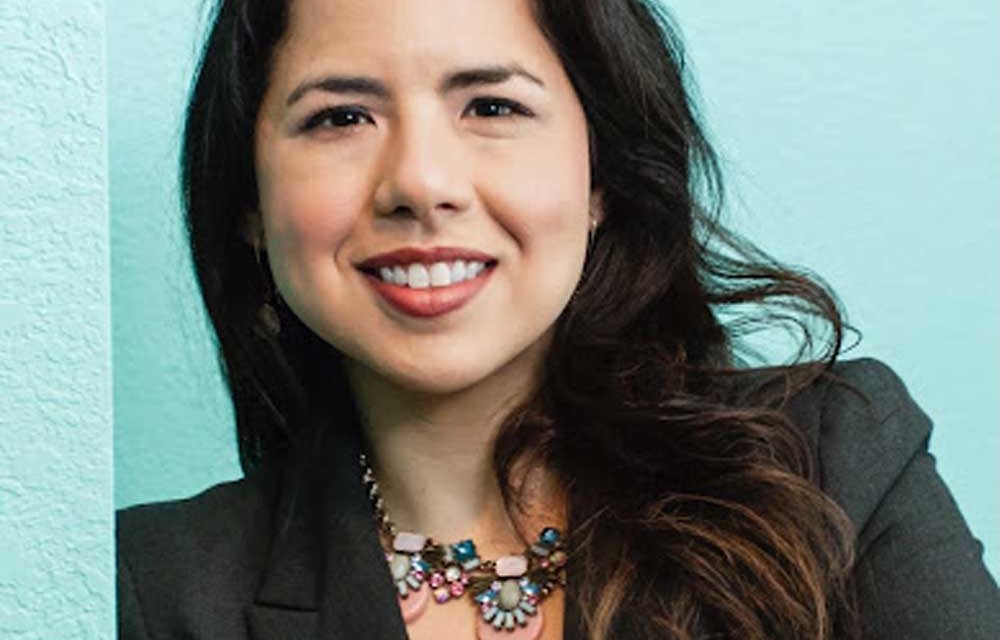Interview by Julia Aguillon
Article by Jackie Velez
Hispanic Heritage Month begins on September 15. Melissa Vela-Williamson, an award-winning Chief Communications Architect at MVW Communications, spoke to La Prensa on the history and meaning of the Hispanic/Latino terms.
MVW Communications is a specialized public relations agency that focuses on diversity, equity, inclusion, non-profit, education, and the Hispanic and Latino culture and market.
Vela-Williamson spent over 17 years developing experience in the public relations and marketing field and immersed herself in the Hispanic and Latino market and culture. She earned a bachelor’s degree in English and Communication Arts at St. Mary’s University. After graduating, Vela-Williamson was in-house at Big Brothers Big Sisters of South Texas. While there, she researched the Latino and Hispanic communities to expand her understanding of them. Her work with Big Brother Big Sisters inspired her to work towards her master’s degree, specifically concentrating on the Hispanic and Latino markets. After working at Big Brothers Big Sisters Of South Texas, Vela-Williamson spent the next four years working in diversity and inclusion at H-E-B’s corporate office. She worked with and on behalf of disenfranchised groups – the Hispanic and Latino community, the African-American/Black community, women, people with disabilities, and the LGBTQ community. That experience helped her gain a better understanding of multicultural communities.
“Being able to give money, time, and volunteer, and drive all of the programming, and messaging around that on behalf of the community as well as H-E-B partners or employees was really a growth opportunity for me as a person,” said Vela-Williamson.
For a year and a half, she worked with H-E-B’s corporate, communication and culture team. Afterward, Vela-Williamson went to KGBTexas Communications, one of the largest PR and marketing agencies in South Texas. After working with KGBTexas, Vela-Williamson decided it was time to spread her wings and fly.
As the Communications Architect at MVW Communications, Vela-Williamson serves clients involved in social justice.
With Hispanic Heritage Month on the horizon, Vela-Williamson uses her impactful background and lends her expertise on what a few terms mean to the Hispanic and Latino community. From “Latino” to “Latinx,” Vela-Williamson breaks down the history and concept of these terms used today.
“The terminologies was really come back from how the U.S. tried to start categorizing our people in conjunction with the Census,” said Vela-Williamson.
Vela-Williamson goes on to explain that the term “Hispanic” came out around the 1970s, and that term was adopted by Americans. Many Latinos who were living in the United States and were the first to immigrate over were categorized by the Census as “Hispanic”.
“That’s the one that’s most welcomed and adopted because it’s got more heritage or history,” said Vela-Williamson. “With a majority of Latinos in the U.S. coming from Mexico, and that’s just numbers wise, they’re probably more aligned with understanding that.”
Vela-Williamson said that the term “Hispanic” was coined to cover the countries that had Spanish speaking origins. However, the term “Latino” is more inclusive and covers the countries that may have Spanish origins but not the Spanish language. There was also a debate on the term “Hispanic” as many Latinos didn’t identify as that and felt that the term “Latino” was more empowering, and so that term emerged. Another group of people felt that the term “Latino” was masculin gendered, so the term “Latina” was born. Afterwards, “Latinx” came out to cover every group.
“What’s interesting is that the research actually shows that more college educated Hispanic or Latina females in the group tend to prefer and use that term, but it’s actually not as accepted as “Latino” or “Hispanic,” said Vela-Williamson. “The data says one thing, but everyone you talk to says another.”
Vela-Williamson advises that when you’re having that conversation ask the other person what term they prefer or align with, remember it, and use it when appropriate.
“If I am more comfortable with Hispanic because that’s the term I grew up with and I feel like that explains my heritage a little easier, and you’re more comfortable with “Latino” or “Latina” or “Latinx,” that’s okay,” said Vela-Williamson. “We have our lived experiences and that’s part of the inclusion work that we need to do as people.”
It is hard for organizations to keep up and figure out the terminology, but it can be done.
“The best recommendation and what purer research does itself is use terms interchangeably,” said Vela-Williamson.
Another suggestion from Vela-Williamson is to look at your community and ask influencers of the culture for advice on the right term to use and what is the history and historical acceptance of it by the community.
“Data is one thing at a national level and the trends say one thing, but then actually doing a little deeper work at your community and local level,” said Vela-Williamson.
“Hispanic” may be the term used for Hispanic Heritage Month, but it certainly has evolved.
“You can go back to, well, this is the actual thing, but if society is kind of moving along, you do want to look to progress with them,” said Vela-Williamson.
For more information on MVW Communications and Melissa Vela-Williamson, please visit the website: https://www.mvw360.com/
Facebook: https://www.facebook.com/MVWCommunications
Instagram: https://www.instagram.com/mvw.communications/










